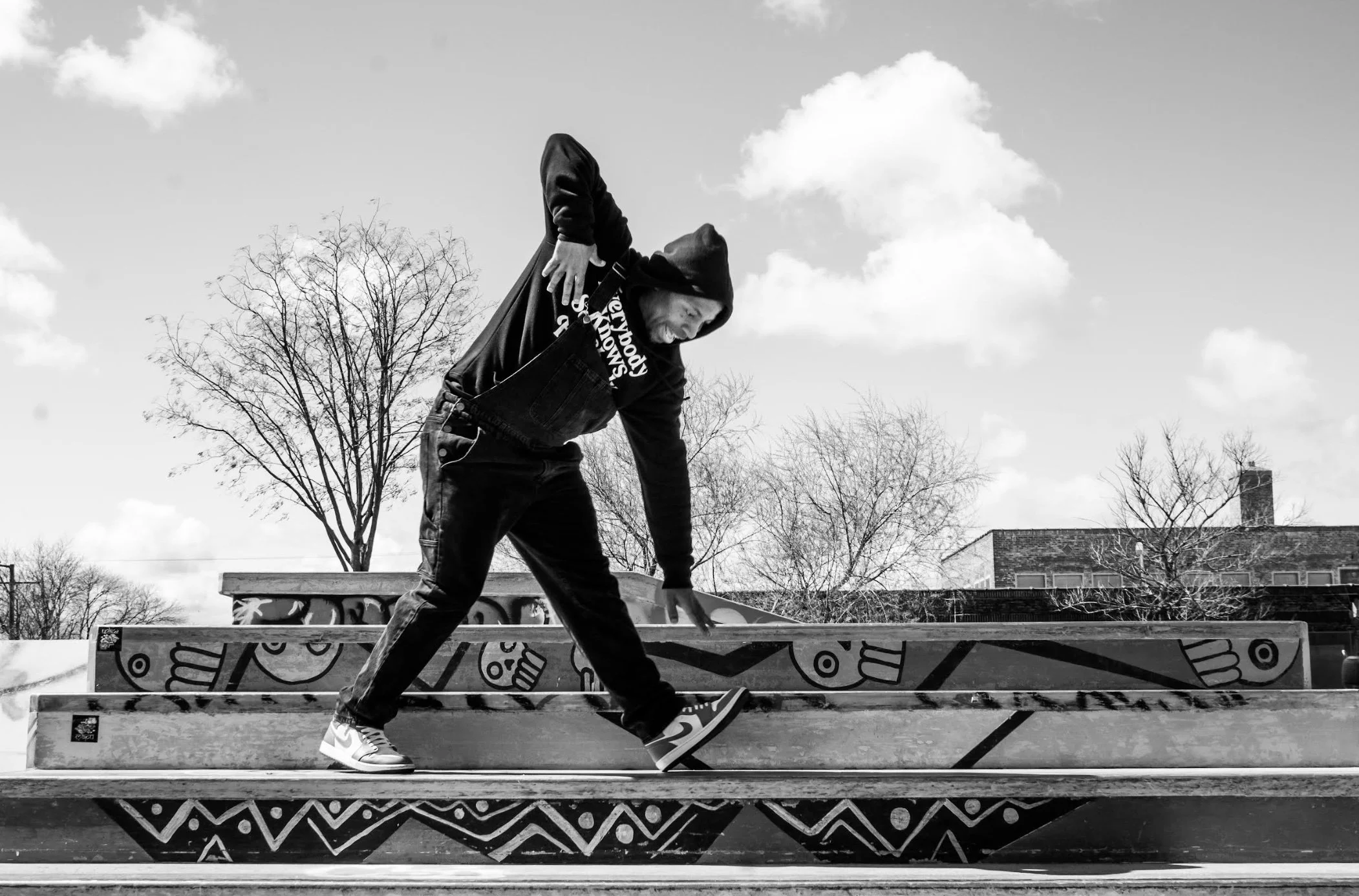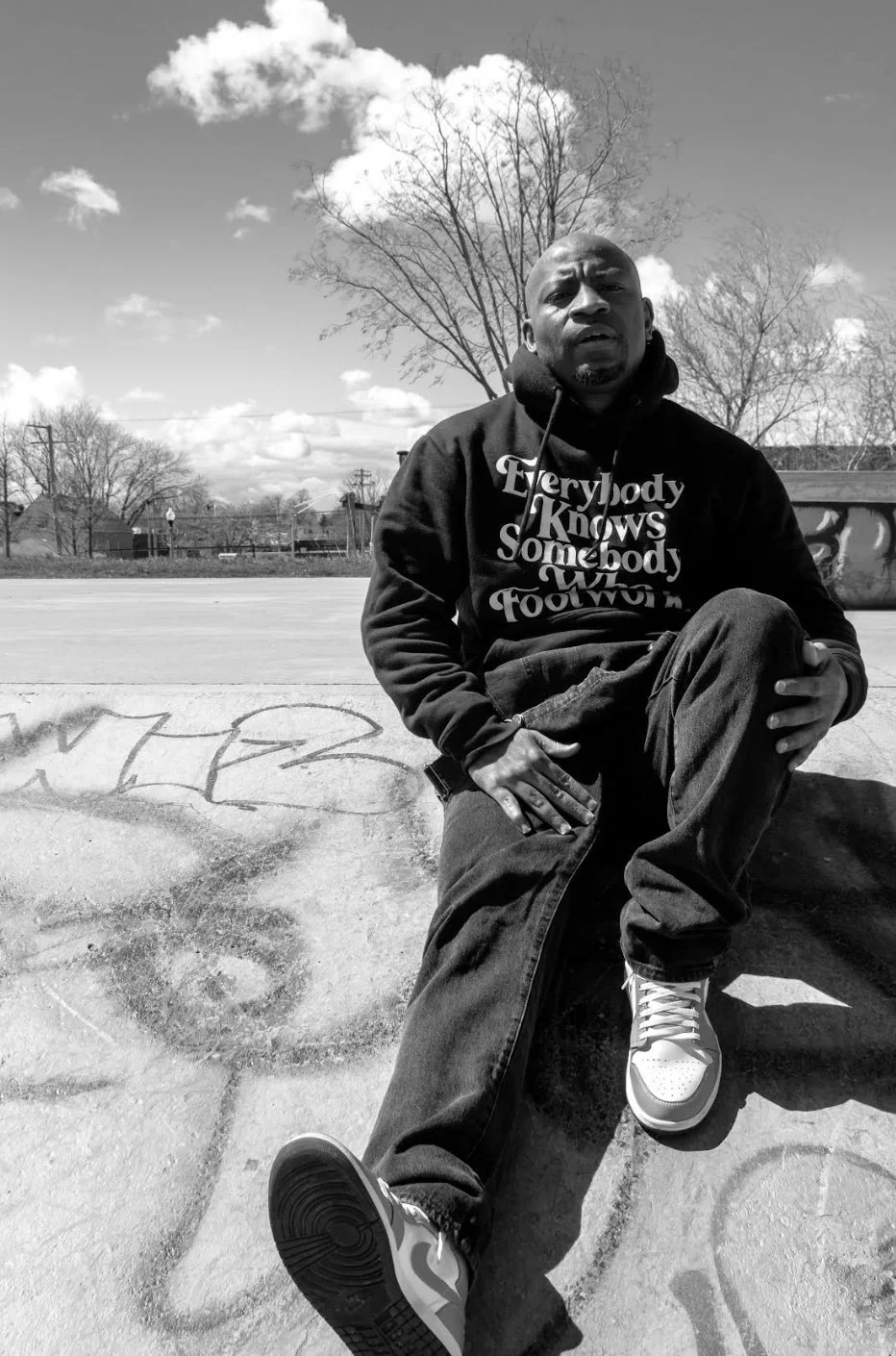
Talking Moves with Mike D
Chicago-based dance educator Michael Davis shares how Black social dance serves as a language, a healing practice, and a tool for collective empowerment. His experience-based sessions create space for joy, connection, and cultural memory—inviting participants of all ages to move, feel, and heal together.
Black Social Dance
Black social dance is how I speak—how I connect, how I live. It’s not just about movement, nor solely about performance for the sake of entertainment. It’s communication rooted in culture, shaped by space, and passed between generations. I define Black social dance as a way of talking to each other without using words. It’s how we engage in our communities and with our histories, often without needing to explain ourselves.
I’ve seen how this form allows people to connect across time and experience. When I’m in a room full of dancers, I might be 41, but I’m sharing movement with six-year-olds and seventy-five-year-olds. That’s intergenerational dialogue in motion. The dance doesn’t just reflect culture—it carries it. It’s a space where knowledge gets exchanged across bodies, often faster and deeper than spoken language allows.
Action as Language
There’s a reason why people say, “actions speak louder than words.” That’s real. In Black social dance, movement is more than just aesthetic—it’s knowledge making. It holds knowledge. You can say something with your mouth, and it might achieve intelligibility. But if you do it with your body, more feelings and sensations are being communicated. They understand it in their bones.
When I teach or share movement, I see how gestures, rhythms, and steps turn into a full conversation. When people start exchanging dance—really experiencing it, not just copying steps but feeling each other out—they’re participating in something powerful. And what’s key is that this communication doesn’t require talking. It relies on presence. On being attuned. That’s what makes it different from other forms of learning or interaction. It doesn’t ask for permission—it invites participation.
A Practice of Healing
What I offer does not arrive in the context of a “class.” I call it an experience. I want people to know that when they come into my space, they’re not just learning footwork. They’re stepping into something that can help them make greater sense of life. Dance might arrive as a form of healing. In my “Community Works” sessions, people use dance to unplug—to turn down the volume of everyday life, allowing them to be fully present.
Some folks show up with real weight on their shoulders: work, family, bills, anxiety, grief. And some of them haven’t danced in years. Others never had the chance. But when they move, something else emerges. The room becomes a space of release. The old footwork shoes is back on, compelling the return of joy. Self-confidence follows.
One of the tools I use is call and response. I’ll start with the call, “Tell your neighbor you got it today,” and that allows people to self-affirm while affirming the humanity of each other. Call and response in this context does the work of building each other up, which doesn’t happen often in more traditional dance settings. In those settings, one might learn steps and leave without interacting with anyone. In my experience-based approach, the dance is relational. It’s not just about learning—it’s about being, belonging, and co-existing.
Refilling the Cup: Self-Care as Praxis
I teach others to care for themselves, but that means I’ve had to learn how to care for myself simultaneously. Being a facilitator doesn’t mean I’m invincible. I experience anxiety. I feel pressure. I carry people’s energy with me after every session. So I’ve had to figure out how to pour into myself before I can pour into others.
One way I do that is by remaining a lifelong student. I seek out people who are more experienced—OGs in the dance, elders in the community. I ask questions. I learn. That helps me refill my cup. And I live by this principle: What’s in the cup is for me; the overflow is for everybody else. I take time for peace—driving in silence, resting, exercising—so I can keep showing up in the right way. This, too, is a form of Black social dance practice. It’s not just about what happens in the studio or on the dance floor. It’s about sustaining yourself so the movement can live on through you.
Race, Legacy, and Moving Toward Togetherness
There is no thinking about Black social dance without a relationship to race. That’s just the truth. The movement I do, Chicago footwork, has a history. It has a lineage. And it comes from Black communities, from Black experience, from Black genius. As an educator, it’s my job to name that and honor it. That’s part of the teaching. That’s part of the accountability.
But here’s the other side: while it’s important to honor the cultural roots, it’s also important to create spaces that are welcoming. I’ve been in rooms with people of all ethnicities—Black, white, Latinx, Asian—and I see how the dance brings us together. I don’t want to gatekeep movement. I want people to experience it fully, to respect it, and to grow from it.
The goal for me is love. The goal is togetherness. We are trying to create the conditions for us to live on this planet together, a way to move with and against violent histories—Black social dance can show us how to do that. We’ve had separation in the past—real separation, violent separation. But in the present, we’re sharing spaces in ways that ask: how do we use the dance to find that middle ground? I don’t think that the events I create in Black social dance spaces are about figuring out everyone else’s intention. On the contrary, my job is to show up in the space with the right intention, with specific offerings of knowledge, and then allow the receivers to decide their mode of relation to the work.
Black Social Dance as a Pathway Forward
What I’m leaning into is this: Black social dance is not just about bodies moving. It’s about the transformation of lives. It’s about holding space for grief and joy, past and future, pain andcelebration. It’s a technology of care, a form of resistance, and a practice of radical togetherness. Whether I’m working with a group of elders or a group of kids, what I see is the same: dance reminds people of who they are. It gives them permission to show up. To feel good again. To connect. That’s what it’s all about. That’s why I do it every day. Because in a world that tries to divide and exhaust us, Black social dance helps us remember that we’re still here. We’re still moving. We’re still healing. And we’re doing it together.
Written by Webster Brandon McDonald



